 TRIZ Paper: Japan TRIZ Symposium 2010 / ETRIA TFC 2010 TRIZ Paper: Japan TRIZ Symposium 2010 / ETRIA TFC 2010 |

 
|
A Large Variety of Writing Instruments:
Studying the Evolution of Technologies in Familiar Items |
Kurumi Nakatani and Toru Nakagawa (Osaka Gakuin University)
The Sixth TRIZ Symposium in Japan, Held by Japan TRIZ Society on Sept. 9-11, 2010 at Kanagawa Institute of Technology, Atsugi, Kanagawa, Japan |
Toru Nakagawa and Kurumi Nakatani (Osaka Gakuin University)
ETRIA TRIZ Future Conference 2010
Nov. 3 - 5, 2010, at University of Bergamo, Bergamo, Italy;
Proceedings, Edited by Caterina Rizzi, Bergamo Univ. Press, Nov. 2010, pp. 327-328. |
| [Posted on Nov. 12, 2010] |
For going back to Japanese pages, press  buttons.
buttons.
Editor's Note (Toru Nakagawa, Nov. 9, 2010)
This paper reports the activities at Nakagawa's Seminar Class of the 2nd year students (of 10 members) at the Faculty of Informatics of Osaka Gakuin University. In September this year, at the Sixth TRIZ Symposium in Japan 2010  , Nakatani and Nakagawa presented this paper in a Poster Session. And further, last week (on Nov. 3-5), at the 10th ETRIA TRIZ Future 2010 Conference, Nakagawa and Nakatani presented it in a Short Paper Session. Even though having been revised slightly, the two presentations are essentially the same and hence are posted here together in a page.
, Nakatani and Nakagawa presented this paper in a Poster Session. And further, last week (on Nov. 3-5), at the 10th ETRIA TRIZ Future 2010 Conference, Nakagawa and Nakatani presented it in a Short Paper Session. Even though having been revised slightly, the two presentations are essentially the same and hence are posted here together in a page.
In this Seminar Class, Nakagawa gave no lecture but asked questions and put tasks one after another onto the students, as a facilitator. Students answered the questions, made excercises. And all the Class members made a report together. Students did not have any knowledge beforehand on technology development process, on systems engineering, on TRIZ, etc. This Seminar Class was designed to study the concepts of TRIZ without using TRIZ terms nor TRIZ tools, and it has achieved its goal.
Especially at ETRIA TFC, this presentation was highly appreciated by the audience, to our pleasure. The evaluation was made on the points of having studied the way of technology development through our familiar items, and of having guided the students up to the understanding of basic TRIZ concepts. Furthermore, although the present class was for the 2nd year undergraduate students, the present way of learning would be applicable to younger students at high schools and junior high schools, and even to 5-6 graders of preliminary schools.
I am going to compose this page of the following items:
[1] Japan TRIZ Symposium, Extended Abstract
A Large Variety of Writing Instruments:
Studying the Evolution of Technologies in Familiar Items
Kurumi Nakatani (Osaka Gakuin University, second year student)
Toru Nakagawa
(Osaka Gakuin University)
The 6th Japan TRIZ Symposium 2010
Held by Japan TRIZ Society on Sept. 9-11, 2010
at Kanagawa Institute of Technology, Atsugi, Kanagawa, Japan
Abstract
This paper reports the activities in Nakagawa's Seminar Class for the 2nd year students (with 10 members) in the 1st semester, i.e., from April to July, 2010. The students selected (or were assigned to) this Seminar class just after reading my syllabus with the title shown above. Without any knowledge about technology development, systems engineering, creativity techniques, nor, of course, TRIZ, the students started this class.
At first, for recognizing a variety of writing instruments, the students were requested to show their own items which they are carrying around at school and to describe the good points of their favorite items. Then a home work was assigned to visit stationery stores and home-centers and to report about as wide variety of writing instruments as possible. Then they are advised to observe various writing instruments, to consider their mechanisms/principles of writing and their merits, and further to classify them in a hierarchical manner. Then the wide range of intended use were considered to specify 'what, on which, and how (during the process and as the results)' to write/draw, and were built up into a hierarchical system. It was gradually understood by the students that with the requests of different use a variety of writing instruments have been developed, such as different in their mechanisms/principles, in shapes, in the characteristics of materials (e.g. inks), etc. This class is designed to make gradual understanding of the ways of evolution of technologies through familiar items, and understanding of important TRIZ concepts without using TRIZ terms. -- Ms Nakatani will talk about her experiences in the Poster Session.
[2] Japan TRIZ Symposium, Presentation Slides in PDF
Presentation Slides in English in PDF  (16 slides, 211 KB)
(16 slides, 211 KB)
Presentation Slides in Japanese in PDF  (16 slides, KB)
(16 slides, KB)
[3] ETRIA TFC 2010 Short Paper
A Large Variety of Writing Instruments:
Studying the Evolution of Technologies in Familiar Items
Toru Nakagawa (Osaka Gakuin University, Faculty of Informatics, Japan),
Kurumi Nakatani (Osaka Gakuin University, Faculty of Informatics, second year student, Japan)
ETRIA TRIZ Future Conference 2010
Nov. 3 - 5, 2010, at University of Bergamo, Bergamo, Italy
Abstract
This paper reports the activities in Nakagawa's Seminar Class for the 2nd year students (with 10 members) in the 1st semester, i.e., from April to July 2010. The students selected (or were assigned to) this Seminar class just after reading my syllabus with the title shown above. Without any knowledge about technology development, systems engineering, creativity techniques, or, of course, TRIZ, the students started this class.
At first, for recognizing a variety of writing instruments, the students were requested to show their own items which they are carrying around at school and to describe the good points of their favourite items. Then homework was assigned to visit stationery stores and home-centers and to report about as wide variety of writing instruments as possible. Then they are advised to observe various writing instruments, to consider their mechanisms/principles of writing and their merits, and further to classify them in a hierarchical manner. Then the wide range of intended use were considered to specify 'what, on which, and how (during the process and as the results)' to write/draw, and were built up into a hierarchical system. The students gradually understood that with the requests of different use a variety of writing instruments have been developed, such as different in their mechanisms/principles, in shapes, in the characteristics of materials (e.g. inks), etc. This class is designed to make gradual understanding of the ways of evolution of technologies through familiar items, and understanding of important TRIZ concepts without using TRIZ terms.
Keywords
Education practice, Teaching TRIZ concepts without using TRIZ terms, Evolution of technologies, Familiar items.
The Seminar class for the 2nd year students were introduced last year in the curriculum of the Faculty of Informatics. The Seminar classes for the 1st year are dedicated for basic mathematics in the 1st semester and for the training of reading, writing, and presentation in the second semester. For the 2nd year students the Seminar classes are compulsory with selection among different topics delivered by teachers with their own intentions. Whereas for the 3rd and 4th year students, the Seminar classes are designed to proceed to the thesis work. Nakagawa conducts such Thesis Seminar Classes with the theme of 'Creative Problem Solving Thinking', and gives a relevant lecture in the 2nd semester for the 2nd year, as reported in [1].
The topic of Nakagawa's Seminar Class for the 2nd year students was announced as "Studying the evolution of technologies in familiar items: from a variety of writing instruments to input devices". Students who selected (or sometimes were assigned to) this class all wondered at first "for what purpose this class handles things like writing instruments?" and "are they relevant to PCs or IT?"
Exercises in the Seminar Class have been carried out as shown above in the Abstract. Teacher asks various questions and gives tasks, while students reply answers, do exercises and homework, and generate ideas.
In the first class, after self-introductions, the teacher requested the students: "Display all the writing instruments you now carry around at school", "Take a photo of them (with your mobile phone camera), and send the image via email to Teacher", and "Select one of your most favorite items and explain why you like it."
In the second class, students were requested to think of as many/different writing instruments as possible and to write them down on a Post-It-Note one by one. To use general names of product types In place of commercial product names; to draw simple sketches of the writing instruments, especially at the point of writing; and then to explain the basic mechanisms of writing, e.g. the mechanisms of writing with a pencil, with a ballpoint pen, with a pen, etc.
Then homework was given to visit a stationery store, a home-center, etc. for surveying real items of writing instruments in as much variety as possible. To watch and record every instrument for drawing/writing and every method of drawing/writing. The students were surprised with the large variety of writing instruments. For the survey, manufacturers' Web sites in the Internet are found very useful.
After listing up many writing instruments, students were requested to classify them, not in simple groups but in a hierarchical system based on the mechanism/principles of writing.
Then we went ahead to think of various needs/usage of such writing instruments. Students were requested to write down different usage in Post-It-Notes one by one, then to classify the variety of usage itself. What to draw/write and on which (medium) to draw/write were found most important categorization. How to draw/write was found significant next. How is the result and how is the process of drawing/writing are of further importance in the usage.
In the middle of the course, we decided to make a big report in collaboration of 10 students instead of individual reports. The report mainly consists of two comprehensive tables, i.e., Table 1. A variety of writing instruments hierarchically classified with their mechanisms and Table 2. A variety of writing instruments classified with their usage.
For summarizing the study, Table 3 was made by linking the writing/drawing methods with different usages.
Table3. Evaluation of various methods of writing/drawing for different usages
| Method -- On which |
Ground |
Wall |
Board |
Clothes |
Paper |
Stone |
Ceramics |
Glass |
Metal |
Plastics |
| Gives a damage |
▲ |
▲ |
● |
- |
- |
● |
▲ |
▲ |
▲ |
▲ |
| Leaves a part of itself as a trace |
- |
▲ |
● |
▲ |
● |
▲ |
▲ |
- |
▲ |
▲ |
| Adds a solid/powder |
▲ |
▲ |
▲ |
▲ |
▲ |
- |
▲ |
▲ |
▲ |
▲ |
| Adds a fluid |
- |
● |
● |
▲ |
▲ |
▲ |
● |
▲ |
● |
● |
| Adds a liquid (ink, etc.) |
- |
● |
● |
● |
■ |
▲ |
▲ |
- |
▲ |
▲ |
| Ejects a material (powder/ fluid/liquid/gas) |
- |
● |
● |
▲ |
● |
▲ |
▲ |
▲ |
▲ |
▲ |
| Puts a material inside the medium |
- |
▲ |
- |
▲ |
- |
- |
▲ |
▲ |
- |
▲ |
Note: Evaluation levels: high ■ ● ▲ - low
In the Seminar Class, no TRIZ terms nor TRIZ methods were explicitly explained nor used. However, the students learned important ideas/concepts forming the bases of TRIZ and system development. In the course of the Seminar Class, the students gradually understood that for fulfilling different needs of usage a variety of writing instruments have been developed by devising new mechanisms and that these form the process of evolution of technologies.
This paper was first presented at Japan TRIZ Symposium 2010 [2].
References
[1] Nakagawa T., "Education and Training of Creative Problem Solving Thinking with TRIZ/USIT", Proceedings of the TRIZ Future 7th World Conference, Frankfurt am Main, 6-8 November 2007, published by Kassel University Press, ISBN 978-3-89958-340-3, pp. 95-102.
[2] Nakatani K., Nakagawa T., "A Large Variety of Writing Instruments: Studying the Evolution of Technologies in Familiar Items", Proceedings of the 6th TRIZ Symposium in Japan, 9-11 September 2010, published by Japan TRIZ Society.
Contact Author
Toru NAKAGAWA;
Osaka Gakuin University, 2-36-1 Kishibe-Minami, Suita, Osaka, 564-8511, Japan;
Phone: +81-6-6381-8434;
E-mail: nakagawa@ogu.ac.jp .
ETRIA TFC Short Paper in PDF  (65 KB)
(65 KB)
ETRIA TFC Short Paper in Japanese in PDF  ( KB)
( KB)
[4] ETRIA TFC 2010, Presentation Slides
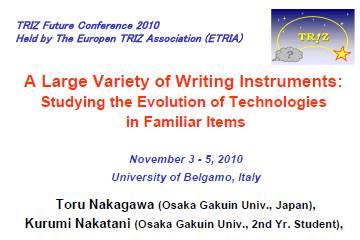
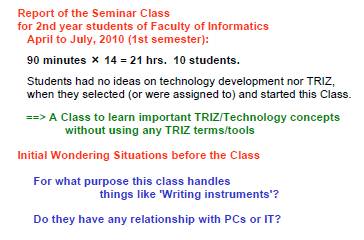

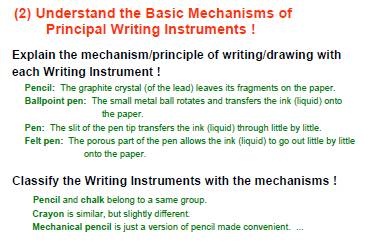
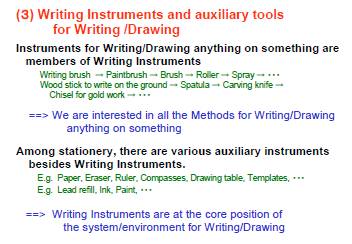
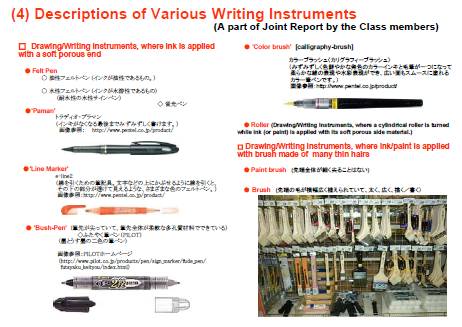


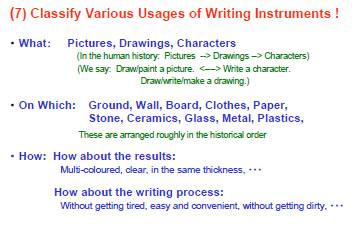
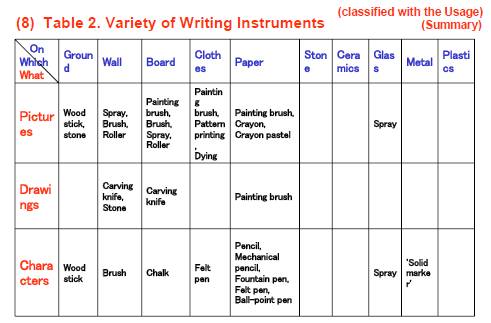
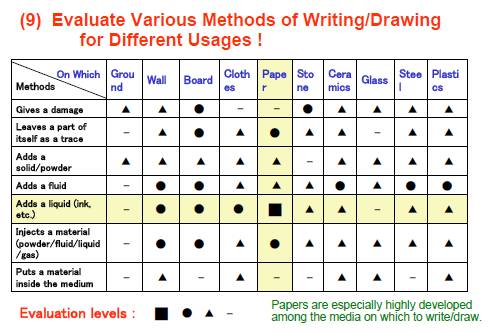
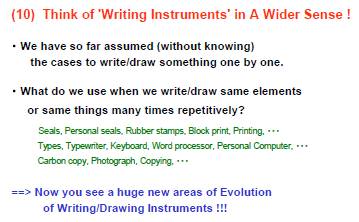
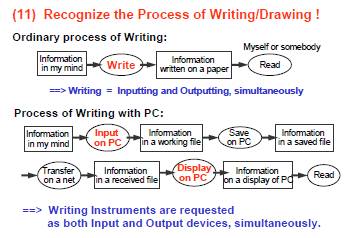
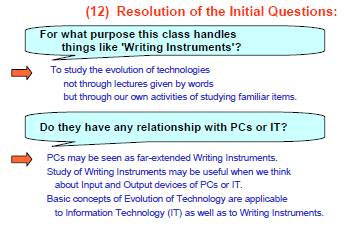
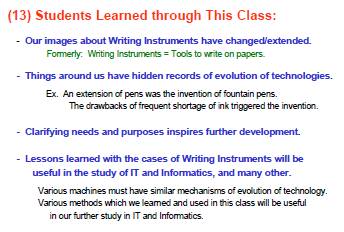
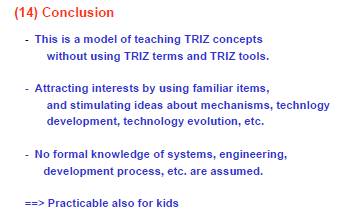
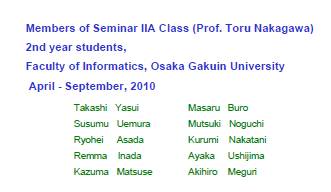
Presentation Slides in English in PDF  (17 slides, 141 KB)
(17 slides, 141 KB)
Presentation Slides in Japanese in PDF  (17 slides, 210 KB)
(17 slides, 210 KB)
Last updated on Nov. 12, 2010. Access point: Editor: nakagawa@ogu.ac.jp